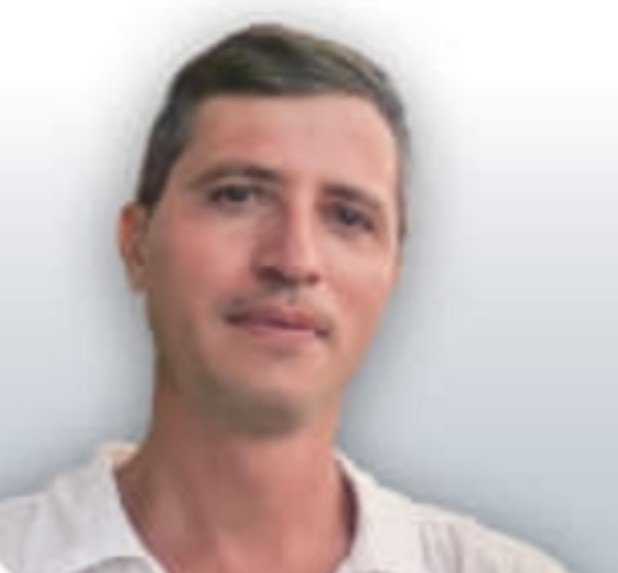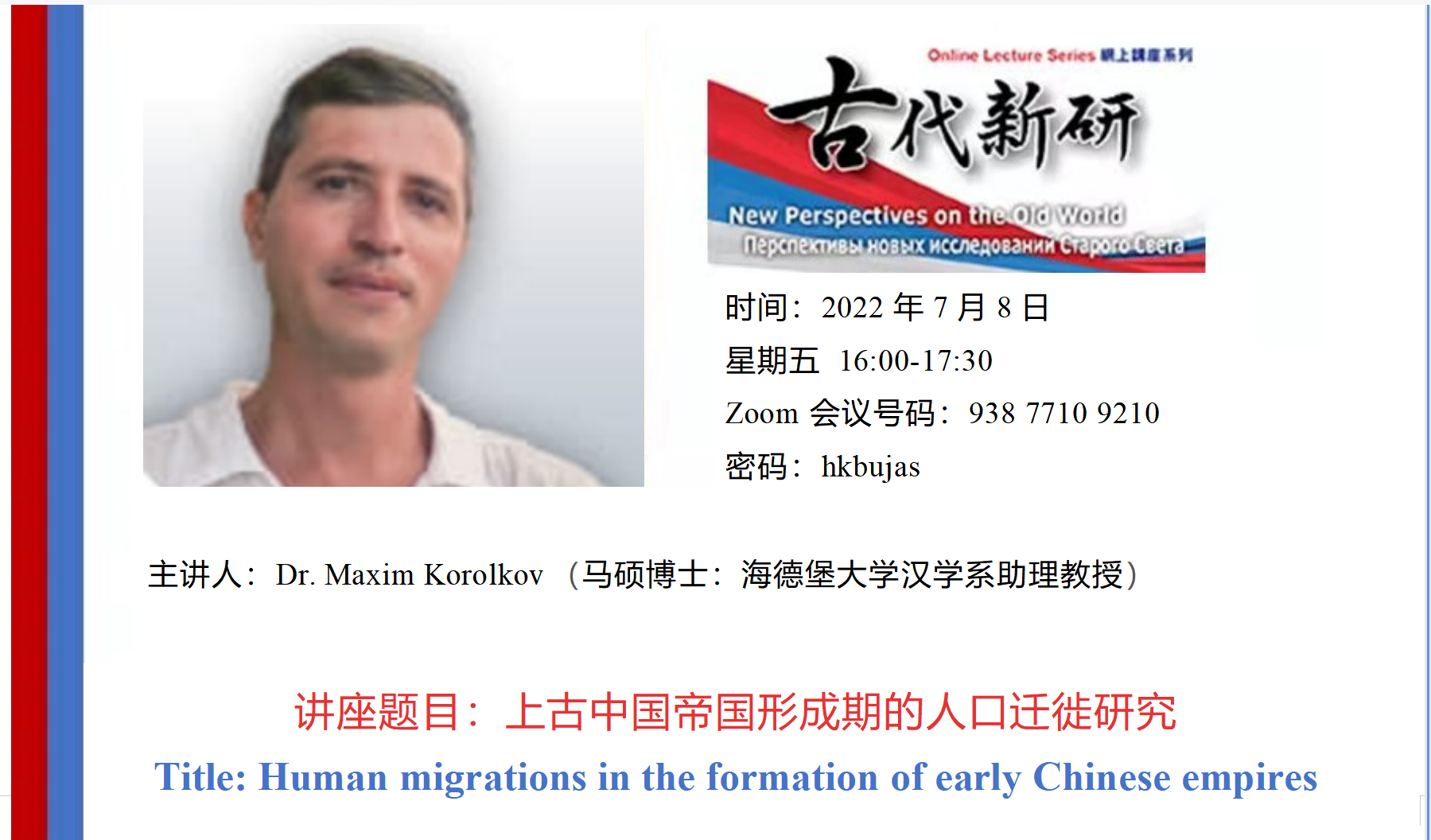 › EVENTS › New Perspectives on the Old World
› EVENTS › New Perspectives on the Old World
 22 October 2021–8 July 2022
22 October 2021–8 July 2022
The series in ancient world studies co-organized with the HKBU Jao Tsung-I Academy of Sinology (JAS) and the Institute of Oriental Studies (IOS), Russian Academy of Sciences, JAS and IOS.
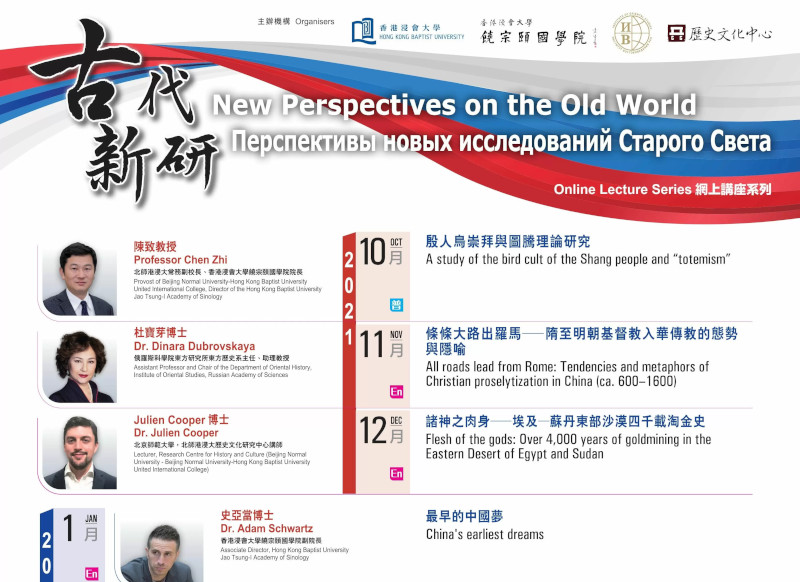
This article was originally published in Monumenta Serica in 1998, entitled "A Study of the Bird Cult of the Shang People", and later translated into Chinese. In this article I investigate whether the Shang people's bird worship belonged to the so-called totem belief by cross-reference examination of this phenomenon in canonical literature, archaeological artifacts, manuscript and inscriptional materials, and point out that Shang people's bird worship was actually aimed at the divine cult of raptors, and the “Totem” theory derived from Victorian anthropology was not applicable. From the extant sources, we can deduce that Shang people's bird worship was not of a specific bird, such as swallow and crow, but of a divine bird, an imaginary “Phoenix” conceived as birds of prey in real life. In recent years, archaeological cultural relics found in archaeology have continued to support this theory.

The vision of gold in the popular imagination of Ancient Egypt is well-appreciated. The vision of gold in the popular imagination of Ancient Egypt is well-appreciated. From Tutankhamun’s death mask to gold-statues of deities, Egypt has a special relationship with the substance of gold – in their theological rhetoric, the very ‘flesh of the gods’. Accordingly, the scholarly and scientific study of gold objects, particularly jewellery, is well-developed. But despite this, very little is understood about the gold industry itself and the origins of gold in the deserts of Ancient Egypt and Sudan. This paper seeks to address a basic question: how did Egyptians, Nubians, and local nomads conduct gold mining in the desert? The overwhelming majority of Egypt’s gold wealth comes from distant mines away from the Nile river in the Eastern Desert of Egypt and Sudan, a vast desert region inhabited by local nomadic groups and providing extremely difficult conditions for mining parties from Egypt and Nubia. Using both the textual record and recent data from surveys in the Eastern Desert, this presentation will assess the main historical phases of mining in the Eastern Desert, its politics of cooperation and conflict, as well as the nature of the expeditionary and institutional apparatus that fueled the gold-industry.


This lecture shall evaluate dreams of the royal family recorded in Shāng divination inscriptions. Through a typology, with annotation, based on the dreamer, images occurring in their dreams, and action taken as a result, I shall discuss the affect of fear and the importance of how ambition was constantly being defined by memory and powered by overcoming despair.

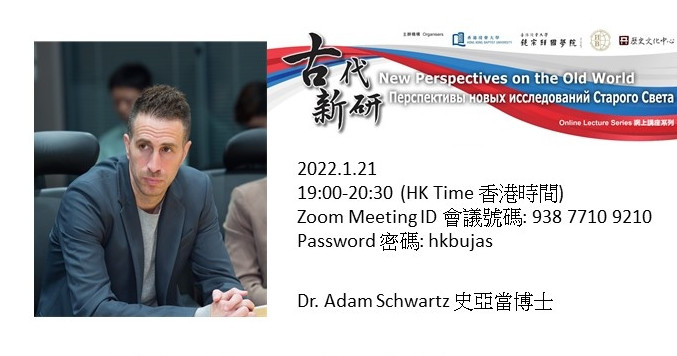
The II millennium BC marked a transition between the Neolithic and the Chalcolithic periods in East Asia. At the end of this millennium there appeared a civilization with sophisticated social and political structures, a highly developed writing system, and large-scale organized crafts, including bronze metallurgy. This remarkable progress was possible thanks to a mutual influence with other cultures. In my presentation I would like to discuss about these early exchanges and possible communication between North Asia and East Asia with particular focus on a few cultures: the Afanasievo culture (IV—III millennium BC), the Okunev culture (II millennium BC), the Seima-Turbino phenomenon (ca. 2300-1700 BC), the Sintashta-Petrovka culture (2050–1750 BCE) and the Karasuk culture (1500–800 BC).

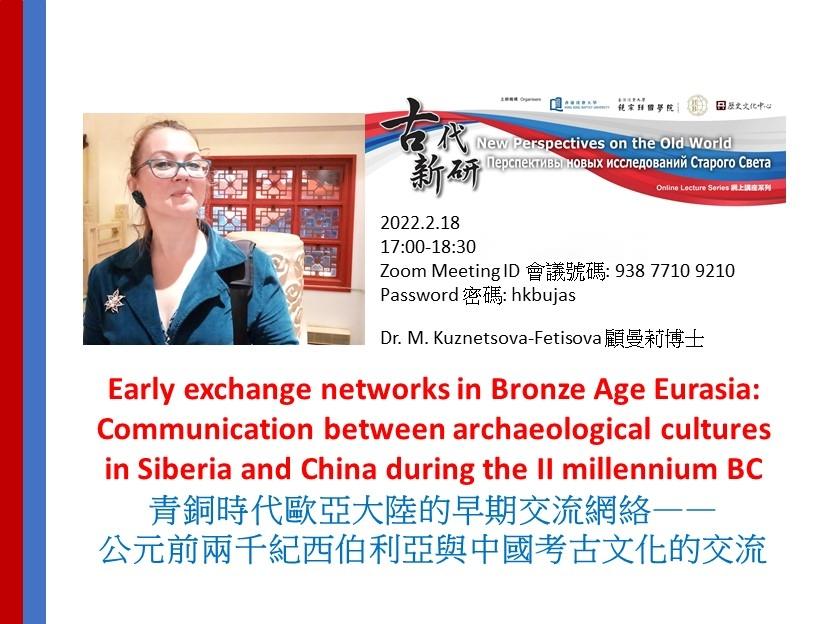
This paper examines the development of language contact in the ancient word. Languages such as Latin and Hellenistic Greek, for example, can be considered as authentic global languages, especially in the Western and in the Eastern parts of the Ancient Mediterranean, respectively–with very different language policies. Besides, numerous other languages were spoken in these domains with widespread phenomena of language contact. Firstly, multilingualism is often attested between different languages, e.g. the bilingualism between Sumerian and Akkadian in the Fertile Crescent in the 3rdmillennium BCE, or the linguistic league of Anatolia in the 2ndmillennium BCE. Secondly, we may have different dialects of the same language, as can be seen in Archaic and Classical Greek. Thirdly, the very same language may show language variety and diglossia effects, as in the distinction of Eme-gir and Eme-Sal in Sumerian, the standard language and the women’s language. On the one hand, we will see how these linguistic phenomena may give us insights into the social and cultural traditions of ancient civilizations, which were much more heterogeneous than traditionally assumed. On the other, our analysis of multilingualism in antiquity can help us to solve some controversial questions about historical language contact.

Du Yu 杜預 (222-284) of the Western Jin dynasty was an eye-witness of the Zhushu jinian 竹書紀年 Bamboo Annals shortly after the bamboo-slips on which it was written were brought to the Jin capital in about 280. He provided the earliest description of the text’s contents, stating that the Eastern Zhou portion dealing with the state of Jin “began from Shangshu (784-781 BCE), and then proceeded through Wen Hou (780-746 BCE), Zhao Hou (745-740 BCE), until Zhuangbo of Quwo (730-716 BCE).” In this paper, I show that the tomb text was not arranged in this way at all, but rather began the Jin portion of the annals with Huanshu of Quwo (745-731 BCE), such that the Jin annals began with the reigns of the Quwo lords. Although the “Current” Bamboo Annals text for this period is dated in the years of the Zhou kings, Ping Wang (770-720 BCE) and Huan Wang (719-697 BCE), the records for Jin reflect the viewpoint of the Quwo lords, and thus presumably derive from the tomb text.
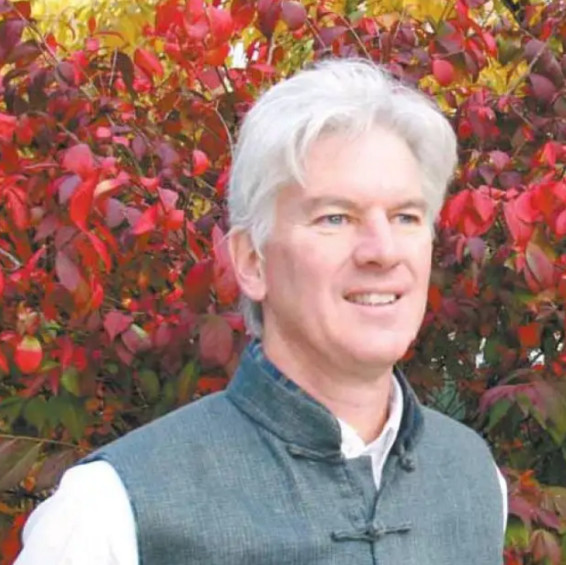
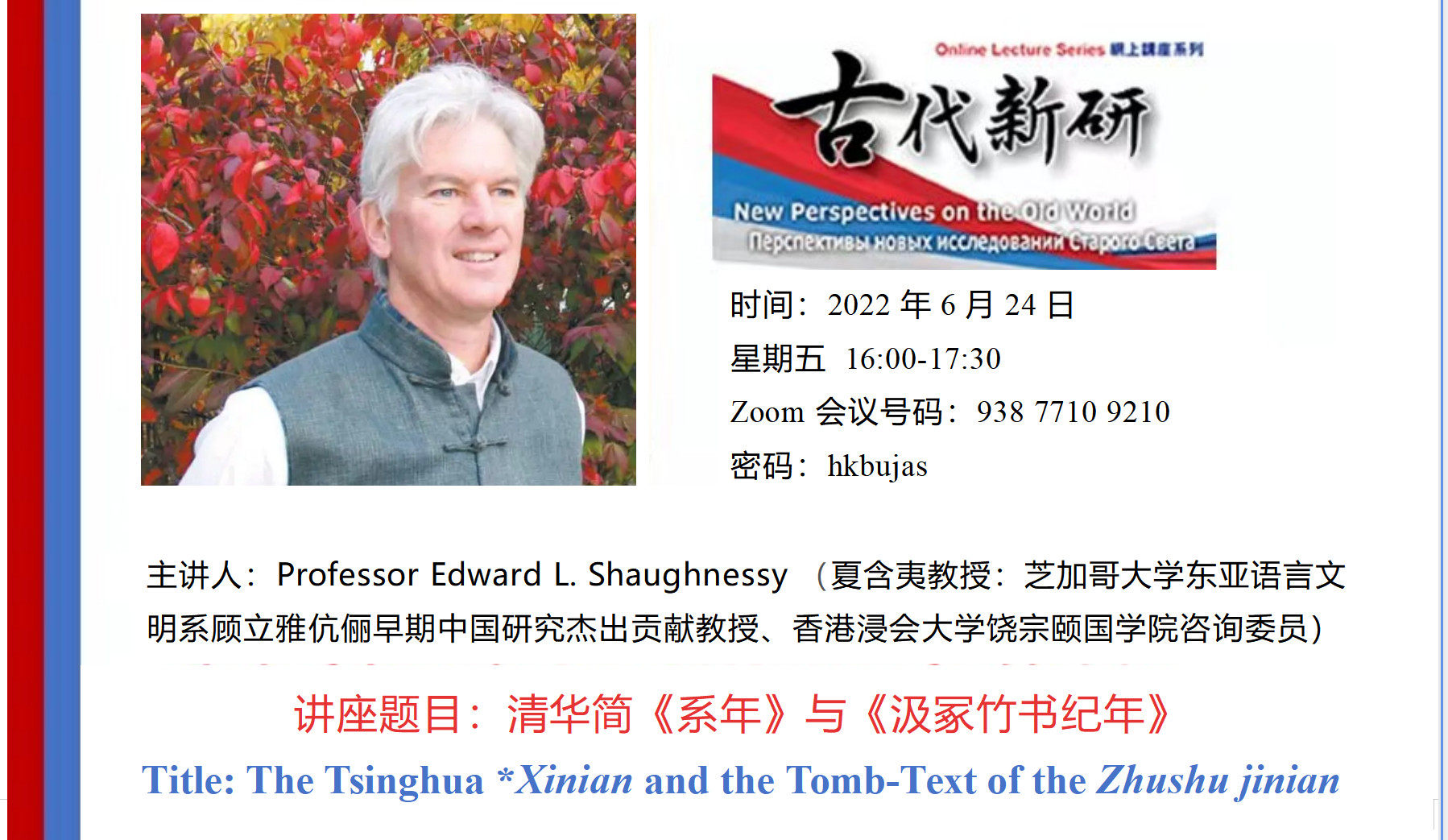
In ancient China as elsewhere, states did not simply occupy a given territory but actively engaged in the production of spaces by transforming landscapes, moving populations, and enacting territorial hierarchies. In the case of the early Chinese empires of Qin (221–207 BCE) and Han (202 BCE–220 CE), state-incentivized migration and settlement were the key instruments of military control, administrative incorporation, economic intensification, fiscal expansion, and other processes that instructed spatial distribution of the state power. This talk utilizes transmitted texts, excavated documents, and archaeological evidence to explore the economic conditions and effects of migration and settlement in the early Chinese empires. While recognizing fundamental technological limitations on the organized relocation of large groups of people under premodern conditions, I argue that imperial human geographies were instructed by the natural and man-made environments in which they developed, thus depending heavily on the effects of state-sponsored migrations upon the broader flows of people, goods, and information.
